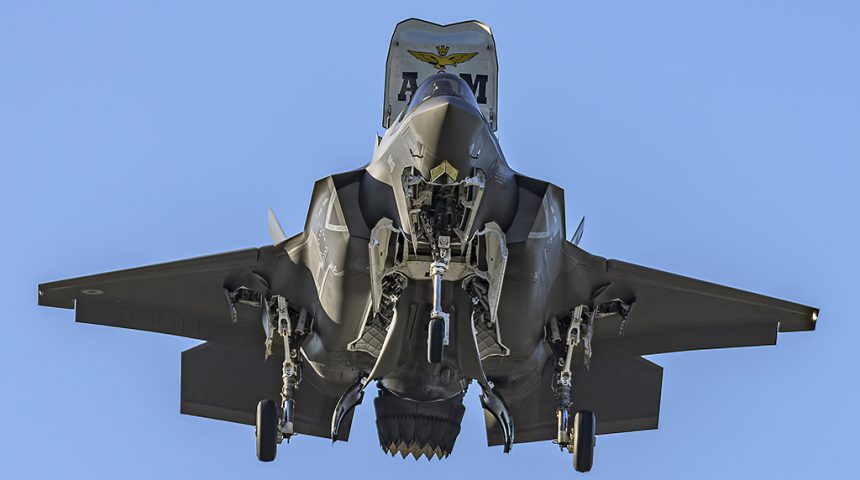Along with the Frecce Tricolori’s anniversary, the Rivolto airshow provided an opportunity for the Italian Air Force to show its capabilities to the public.
During the past few weeks, we reported about the international airshow held at Rivolto Air Base on September 18 and 19, 2021 to celebrate the 60th anniversary of the Frecce Tricolori, the display team of the Aeronautica Militare (Italian Air Force). After the highlights and the aerobatic teams, this week we complete our report with a focus on the demonstrations which involved the Italian assets.
As we already reported, this was the first large-scale airshow in Italy in almost two years, which was initially intended to be held in 2020 as the beginning of year of celebrations which would have lasted until the anniversary on March 1, 2021. This offered the perfect occasion for the Italian Air Force to demonstrate its capabilities to the public, including some that were shown for the first time like the F-35B, which had its first appearance in front of the general public during the airshow.
The second part of the airshow, introduced as the first one by a flyby of a HH-139A helicopter with an Air Rescueman suspended by the winch and carrying the Italian flag, was entirely dedicated to the Italian assets. Those included the Legend formation, a Slow Mover Intercept (SMI) scenario, the technical displays of the Reparto Sperimentale Volo (the Test unit of the ItAF) and a very interesting COMAO (Composite Air Operations) demonstration, before the Frecce Tricolori closed the airshow with their exhibition.

As happened during the airshow for the 55th anniversary in 2015, the Legend formation was again one of the highlights. When it first appeared in 2015, the formation was made of six famous trainer aircraft in the history of the Aeronautica Militare, which recently were increased to seven during the flyovers for the 75th anniversary of the 61° Stormo (Wing). For the Rivolto airshow, the formation grew again becoming a nine-aircraft formation. Among them there are the three aircraft types currently in service with the 61° Stormo (T-339A, FT-339C and T-346A), as well as five privately-owned historic trainers.
The historic aircraft featured in the formation were the SIAI-Marchetti S.208M (which is still used as liaison and glider towing aircraft), the North American T-6G Texan, the FIAT G.46, the SIAI-Marchetti SF-260AM and the two AerMacchi MB-326E and MB-326K. The Texan, piloted by Sandro Pagliarin, is a restored 77-year-old aircraft that was sold to Italy as part of the Mutual Defense Assistance Program in the 1950s. Bought as scrap from a theme part in the late ‘90s, it underwent a lengthy restoration that resulted in the “Pilot Maker” (as the T-6 is often dubbed in the aviation world) returning to fly after 25 years on the ground.
The G.46 has a special place in the Italian aviation history, being the first aircraft built by FIAT immediately after WW2 and the first entirely metallic aircraft to enter service in the ItAF. The aircraft was dismissed in the late ‘50s, with many obtained by aeroclubs but later scrapped because they were too expensive to maintain at the end of their useful life. The one flying in the Legend formation belongs to the Marchi-Sorlini collection, who acquired the aircraft in the ‘80s and restored it to flying conditions after years spent exposed to the elements.
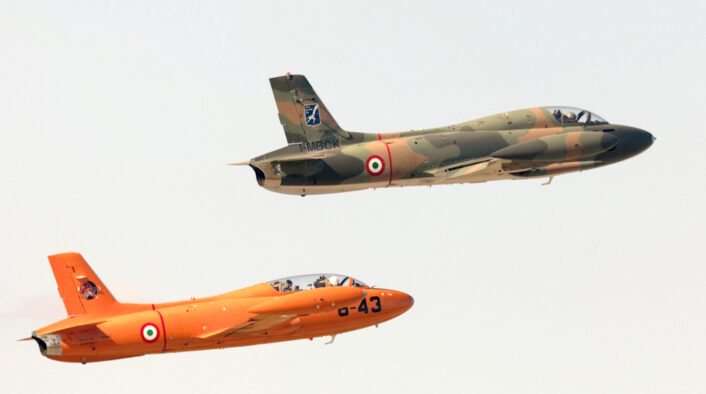
The MB-326 was for many years the basic jet trainer of the Aeronautica Militare, with the one seen in Rivolto serving from 1962 to 1989. This specific aircraft, which throughout the years was upgraded to the armed MB-326E variant, was assigned to the flight school until 1985, before being used as liaison aircraft by the 9° and 6° Stormo. Sold to a private airfield as static exhibit, the aircraft spent 20 years exposed to the elements before its current owner and pilot, Renzo Catellani, bought it and begun the restoration that took the MB-326E back to the skies in 2012.
Catellani was not done yet, with other Italian jets already being restored. One of them was the MB-326K which participated to its first public airshow in Rivolto for the Frecce Tricolori’s 60th anniversary. The MB-326K is the armed single seater variant of the MB-326 trainer, which was designed with a focus on air-to-ground attack. This specific aircraft is not entirely the result of a restoration, as it can be considered almost a new aircraft, since it was obtained from an airframe whose assembly was never completed.
The MB-326K flew again for the first time in 2019, painted as another aircraft of the same type that was assigned to the Reparto Sperimentale Volo (RSV) and piloted by retired ItAF Gen. Maurizio Lodovisi, who is actually a former RSV test pilot involved in the MB-326K testing in the ‘80s. Another aircraft is currently in the works, the Fiat G-91R light fighter which served for over 35 years in Italy, Germany and Portugal. Catellani’s team is working to get the G-91 airworthy again, reportedly with the aim to get it to fly again for the Aeronautica Militare’s 100th anniversary in 2023.

Following the landing of the Legend formation, two F-2000s were scrambled for the next demonstration, the Slow Mover Intercept scenario. The two fighters belong to the newest Italian Typhoon unit, the 132° Gruppo (Squadron) of the 51° Stormo, which is currently temporarily deployed to Rivolto as their homebase Istrana is undergoing runway renovation works. For this scenario, the Typhoons intercepted a HH-139A helicopter which forced them to fly near stall speed at a high AOA (Angle Of Attack), with one fighter proceeding to the identification and the other one following from a distance in a supporting position.
When the helicopter started slowing down for landing, the fighters started circling overhead to keep the “zombie” (as the intercepted target is dubbed by pilots) in sight until, in a real scenario, ground forces would have taken over and secured it. The SMI capability has been further developed in Italy during the last few years with the use of both fighters and helicopters for the intercept, as Typhoons would be scrambled for a first VID (Visual IDentification) and to keep the zombie under control until the helicopters arrive on scene.
While flying in the Slow Mover Intercept role, the helicopters will embark “Fucilieri dell’Aria” (Air Riflemen) of the 16° Stormo working as helisnipers or, more correctly in this case, Slow Mover Interceptor Operator (SMIO). The operators, which recently reached the Initial Operational Capability during a live fire campaign with the French Air Force, are there to provide an air-to-air engagement capability, should the need arise, to stop a rogue aircraft. For this role they will use precision weapons like the recently introduced ARX-200 7.62 x 51 mm Designated Marksman Rifle.

Following the SMI demonstration, the two Typhoons landed as another two escorted the A319CJ of the 31° Stormo, the Italian Air Force One, transporting the Italian President Sergio Mattarella to attend the celebrations for the Frecce’s anniversary. The aircraft was then parked away from the crowd at the end of the runway, with the President taken by car to the authorities’ official gallery where he enjoyed the airshow from a center stage seat.
It was now time for the technical displays of the Reparto Sperimentale Volo. The first aircraft to take the skies was the C-27J Spartan with its Demo Crew composed by Maj. Stefano Guardigli, Maj. Jonathan Canestrini and Lgt. Giuseppe Civica, supported from the ground (as the other two displays later) by the 311° Gruppo commander, Lt. Col. Federico Petracca, as safety observer. The C-27J showed again its agility and maneuverability with some aggressive maneuvers that are common for fighter jets, but very unusual for aircraft of this size.
One of these maneuvers was the tonneau (or aileron roll), which few transport aircraft are able to perform it safely. However, as explained in a past article here on The Aviationist, “this kind of maneuver retains a degree of usefulness in a tactical situation as it could be the faster way to reverse a turn when the transport aircraft detects a threat or comes under enemy fire and needs to follow the less predictable flight path”.

Next up was the T-346A Master, the advanced trainer used by the 61° Stormo to train pilots selected for the fighter track after they obtain their military pilot wings. The jet was flown by the Demo Pilot Maj. Luca Guasti, who displayed the high performance of the Italian trainer which are comparable to the ones of a much more expensive fighter. Thanks to these performances, the T-346 can be used also for other specialized roles outside the standard Lead-In Fighter Training (LIFT) for which it was primarily designed.
As you may recall, we reported about the M-346 being used as versatile aggressor aircraft during multiple editions of the Tactical Leadership Programme and even as light fighter in the dedicated LFFA (Light Fighter Family of Aircraft) variant. The latter, which flew for the first time last year, brings new wingtip hardpoints for increased payload, radar, IFF and datalinks, and a complete Defensive Aid Sub System (DASS) which includes UltraViolet (UV) Missile Warning System (MWS) sensors. With all these capabilities, some even described the M-436 as a “mini-F-16”.
The last RSV display was the one of the Eurofighter F-2000 Typhoon piloted by the Demo Pilot Maj. Marco Civini. The Typhoon’s display, with its extensive use of afterburners and aggressive maneuvers, was as always a crowd pleaser. While the technical display focused on the aircraft’s performance, the operational capabilities, including the new swing-role capability, where the focus of the COMAO (Composite Air Operations) demonstration during the next part of the airshow.

The Italian Air Force did not initially plan to employ the Typhoon in the air-to-surface role, sticking only to air superiority missions. However, since 2016, the Italians begun to work increasingly on the swing role capability, as seen with the participation in this role to the Red Flag and Tactical Leadership Programme exercises. Earlier this year, the Typhoon was finally captured in official photos flying in swing role configuration with the new GBU-48 Enhanced Paveway II, a 1,000 lb (454 kg) Enhanced dual-mode (GPS and Laser guided) version of the GBU-16, also known as EGBU-16.
The COMAO demo started with the takeoff of some of the aircraft involved, like the AMXs light fighters and the F-35B, which performed a short takeoff in STOVL (Short Take Off Vertical Landing) configuration. The first event demonstrated the capabilities that were put to use to evacuate civilians from Kabul during operation Aquila Omnia. This involved a C-130J performing a tactical landing at an airfield located in a contested area to exfiltrate civilian and military personnel under the surveillance of the Fucilieri dell’Aria, which this time provided protection in the Air Marshall Security Service role, and without shutting down the engines, in what is known as ERO (Engine Runway Operation).
Following this first Personnel Recovery demonstration with the use of tactical airlift capabilities, it was time for the strategic airlift capabilities to join the stage with the KC-767 tanker. The tanker performed a low pass over the runway, which in a real scenario would be used to inspect it as a safety measure against any obstacles, before performing a quick landing followed by a likewise quick departure and steep climb away from any threats.
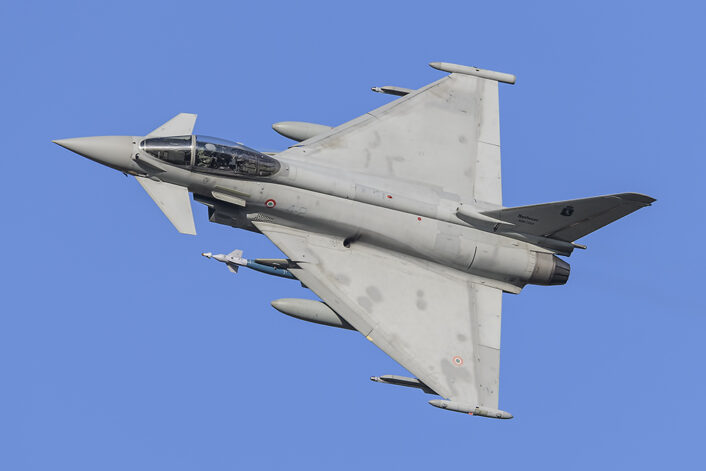
The next event was the real COMAO, which involved different assets working together to achieve the mission’s objective, the extraction of wounded personnel by a Special Forces team of the 17° Stormo “Incursori” (Raiders). The complex scenario was supervised by a G550 CAEW (Conformal Airborne Early Warning) that provided AEW-BM&C (Airborne Early Warning, Battlefield Management & Communication) capability while a Predator RPA observed the objective area through its sensors, providing the Information Superiority needed by the decision makers in any conflict or crisis operation.
The first mission in the COMAO package was a Suppression and/or Destruction of Enemy Air Defenses (SEAD/DEAD) attack against a SPADA SAM battery of the local-based 2° Stormo, the ItAF missile unit. The mission was performed by an F-35A Lightning II launched from its home base at Amendola and relied on the low observability of the aircraft. As you may know already, the F-35 does not have dedicated anti-radiation munitions yet, however the aircraft which took part in the demo showed two inert GBU-12 Paveway II bombs during the open weapon bay pass over the simulated target.
After the enemy air defenses had been disabled, it was the turn of a package composed by two Typhoons loaded in a swing role configuration with two IRIS-T IR-guided air-to-air missiles and two GBU-48 Enhanced Paveway II; two Tornados (one of those carrying three GBU-32 JDAM bombs) and two AMX to attack the airfield: this phase provided the crowd with a quite rare sight during Italian airshows, with an AMX dropping flares during a simulated strafing run and inert bombs on the Typhoon, F-35 and Tornado.
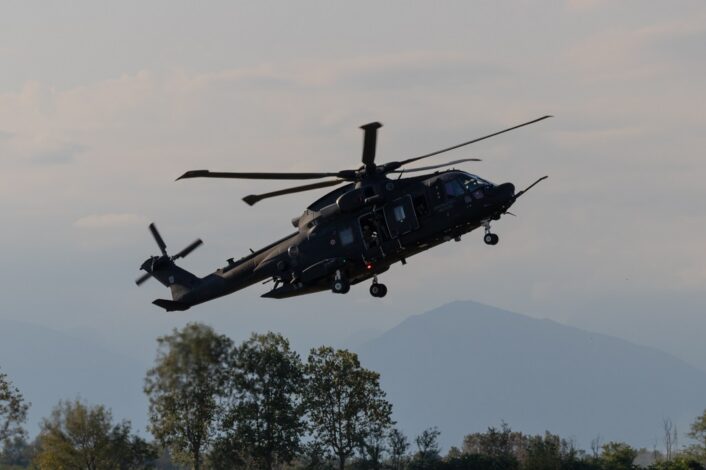
These aircraft performed multiple attack runs in 30 second intervals at low altitude, clearing the way for the extraction force. In fact, while one Typhoon and an F-35 provided top cover and Close Air Support (CAS) with glide 10 strafing attacks, two HH-101 Caesar helicopters arrived on scene and quickly deployed via the Fast Rope Insertion Extraction System (FRIES) an eight-man Special Forces team. The helicopters then begun circling the area to provide cover with their M-134 miniguns, while the Raiders moved to exfiltrate the wounded military from a nearby building.
Meanwhile, one Tornado and one AMX in Sandy role provided armed overwatch flying a Visual Wheel at 1,000 and 2,000 feet as an added layer of protection for the HH-101s that were now preparing to perform an assault landing to extract the ground forces. With the subsequent takeoff and egress of the helicopter from the combat zone, the complex mission was completed.
Following the successful ending of the mission, the F-35B returned to take the stage and demonstrate its STOVL capability, approaching the field from the North, hovering in front of the crowd at the center of the display line and then landing vertically on the runway. As the Lightning cleared the runway, a composite formation of most of the aircraft taking part in the demonstration, split into three sections, performed a flyby over the airport.
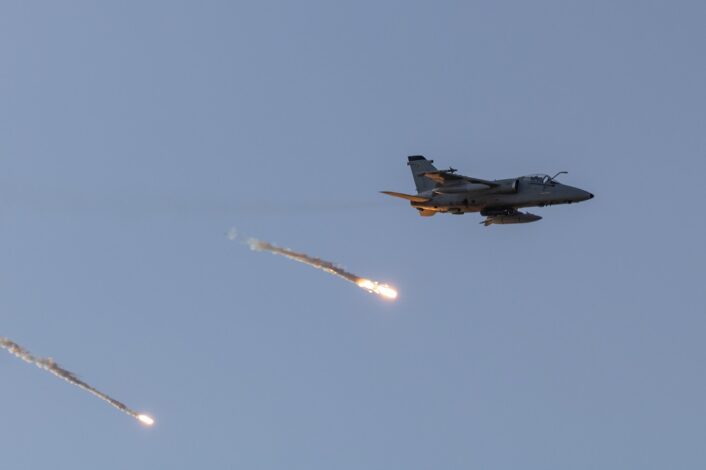
The first section was a formation made of a KC-767, F-35A, F-2000, AMX, Tornado and G550 CAEW flying at 1,000 feet AGL and 270 knots; the second formation, coming in at 500 feet and 220 knots was a formation with a C-130 and a C-27J while the third and final section, flying at 100 feet AGL, was composed by two HH-101A Caesar helicopters of the 21° Gruppo (Squadron) of the 9° Stormo (Wing).
This COMAO demonstration was meant to demonstrate the combined air and ground capabilities of the Italian Air Force, with the “regular” Air Force supporting the 1^ Brigata Aerea Operazioni Speciali (Special Operations Air Brigade). The Brigade includes among its units the 9° Stormo and 17° Stormo, which provide Special Operations-capable helicopters (and crews obviously) and Special Forces, respectively, and can perform the entire spectrum of Special Operations, with a focus on aviation-related missions as air power multipliers.

